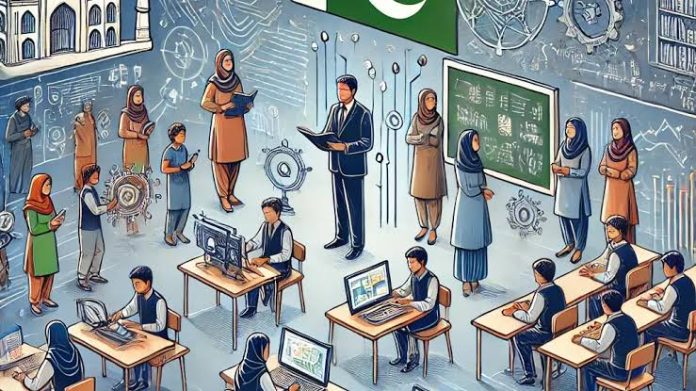In a rapidly evolving world, education remains one of the most enduring pillars of progress. Over the years, Pakistan has made commendable strides in expanding access to schooling and improving literacy—especially at the primary and secondary levels. However, the higher education landscape—comprising universities, public colleges, and research institutions—now demands renewed focus and strategic investment.
Higher education institutions in Pakistan are gradually adapting to global demands. Many have introduced research-based programs, begun digitalizing administrative processes, and formed partnerships with industry to boost graduate employability. These efforts reflect institutional resolve, but they also stretch limited capacities—underscoring the need for long-term and consistent resource allocation.
Despite these efforts, Pakistan’s education budget has faced steep reductions. In the federal budget for FY 2025–26, education was allocated with a reduction of 44% decrease from the previous year. More critically, the total national education expenditure has fallen to only 0.8% of GDP—the lowest in over a decade. This is far below the UNESCO-recommended benchmark of 4%–6% of GDP and places Pakistan behind most countries in the region. Within this modest allocation, higher education receives only a fraction—leaving universities under-resourced, faculty overstretched, and student services underdeveloped.
Public universities in Pakistan serve an estimated 1.9 million students. Yet many campuses still face infrastructure gaps, limited research funding, and uneven access to technology. The burden of underfunding is especially acute for affiliated colleges and institutions in underserved regions, where disparities in internet access, teaching capacity, and curriculum development continue to limit opportunity.
Encouragingly, targeted reforms have shown that progress is possible. Over 300 higher education institutions are now connected to the Pakistan Education and Research Network (PERN), enabling high-speed connectivity. Digital tools such as Learning Management Systems (LMS) and Enterprise Resource Planning (ERP) platforms have begun improving transparency and standardization. Moreover, recent evaluations show that over 60% of outcomes from national competitive research grants and innovation seed funds have been successfully achieved—demonstrating the sector’s potential when supported with focused investments.
Looking regionally, India allocates approximately 4.6% of its GDP to education, with notable advances in digital university ecosystems and global partnerships. Bangladesh has surpassed Pakistan in tertiary enrollment and is actively investing in university-linked innovation hubs. These examples show that sustained investment—coupled with policy clarity—can unlock higher education’s full contribution to economic and social development.
For Pakistan, the opportunity lies not just in acknowledging current gaps but in addressing them with intention. A renewed focus on increasing public investment in higher education, particularly for digital infrastructure, faculty development, student support services, and research funding, can yield long-term dividends. Institutions across the country have already demonstrated resilience and innovation—what they need now is predictable funding, institutional continuity, and national commitment.
Pakistan’s education conversation rightly emphasizes literacy and school access—but must now expand to include the growing needs of universities. As more students reach higher education, they deserve institutions that are inclusive, modern, and equipped to prepare them for a fast-changing world.
This is not a story of crisis—it is a moment of quiet possibility. With the right investment, collaborative leadership, and vision, Pakistan can transform its higher education sector into a dynamic engine of innovation, equity, and inclusive growth.


